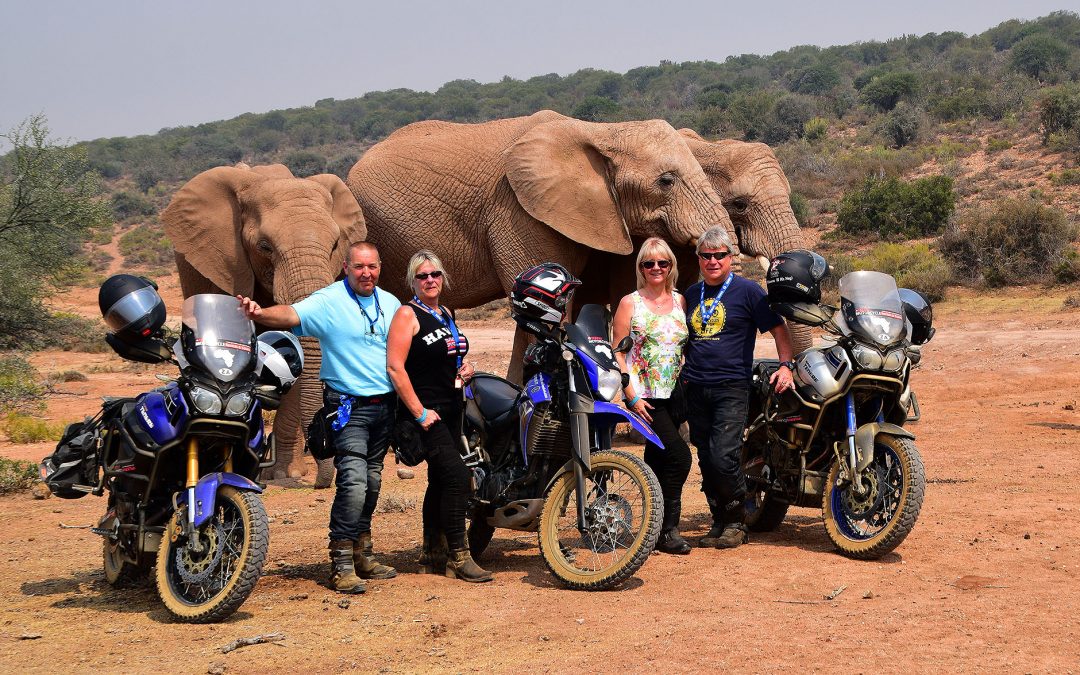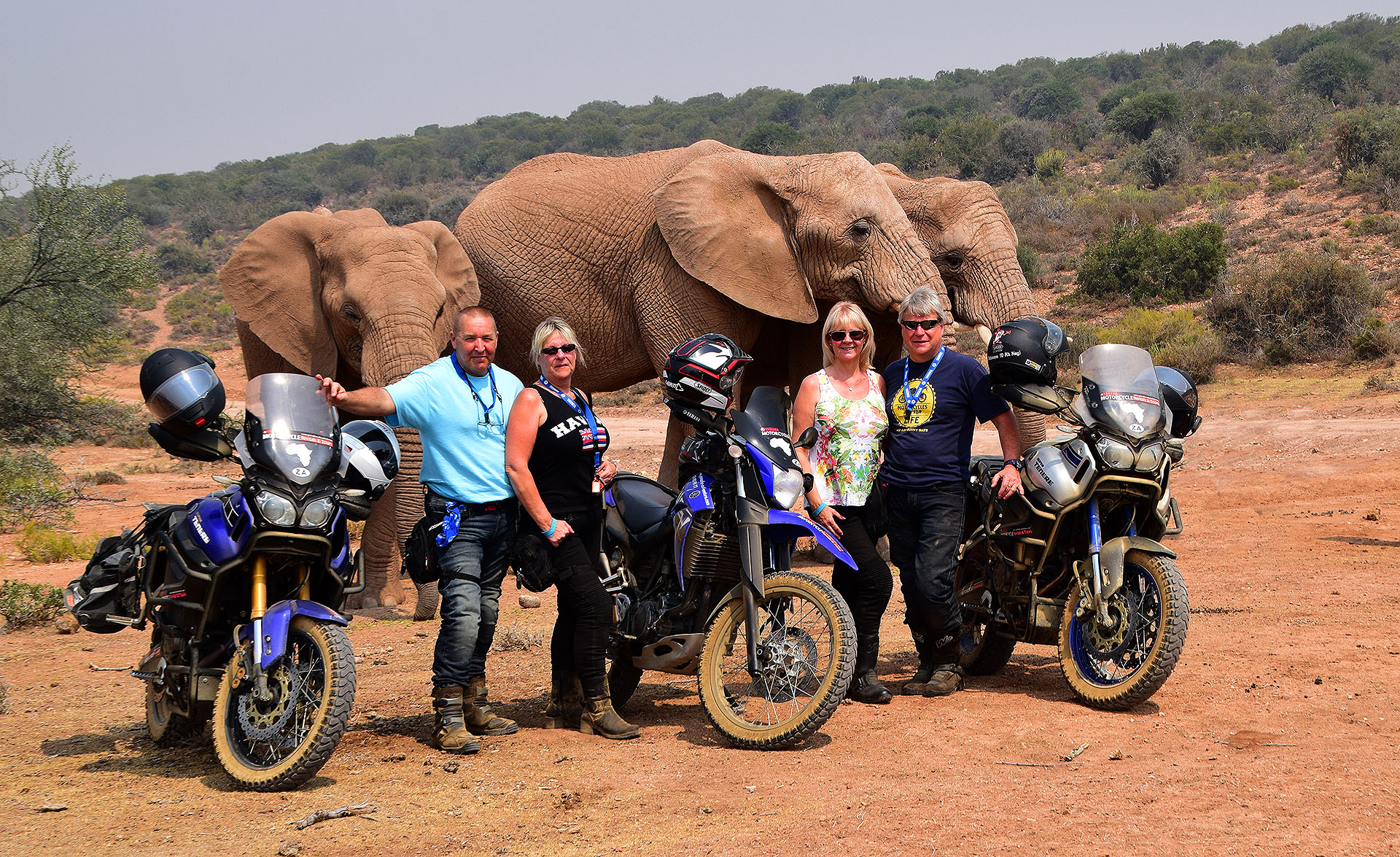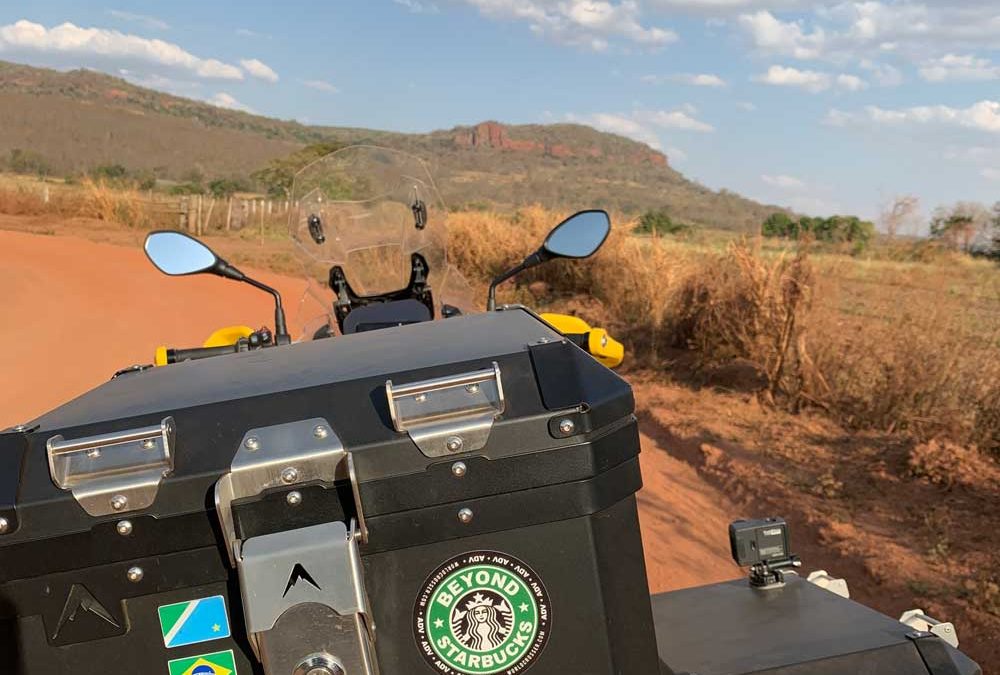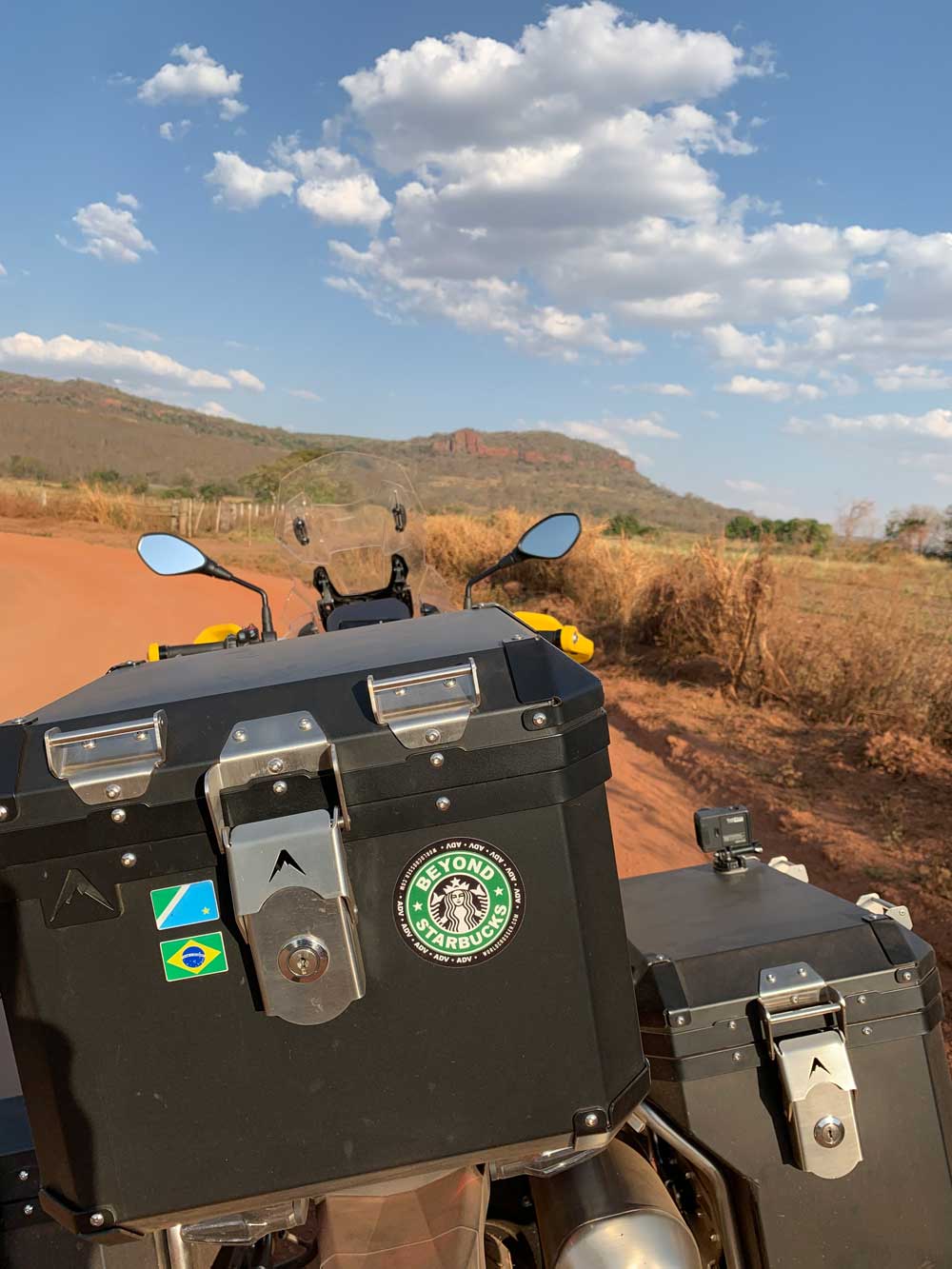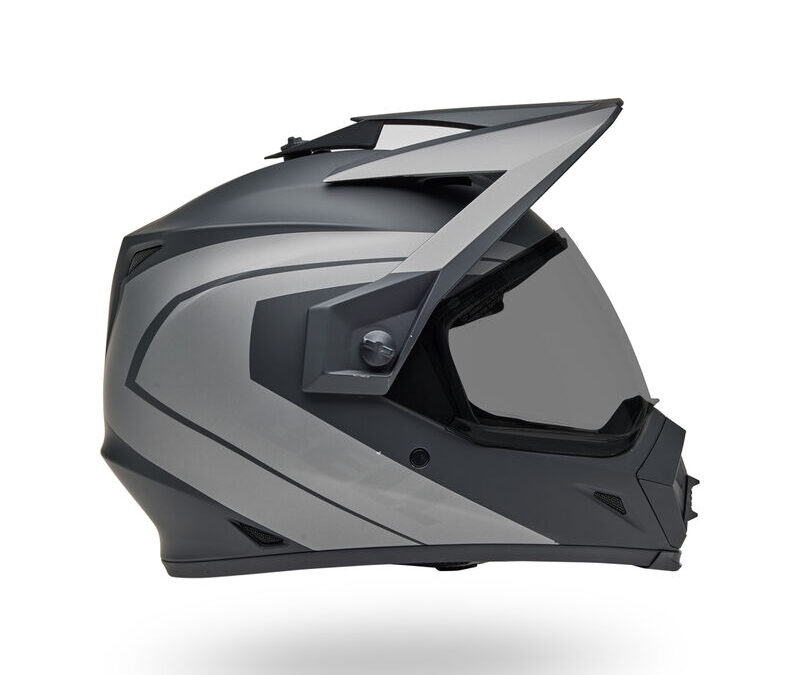
Top 10 Adventure Motorcycle Helmets for Ultimate Safety and Comfort
Top 10 Adventure Motorcycle Helmets for Ultimate Safety and Comfort
Introduction
Choosing the right helmet is essential for any adventure motorcyclist. Whether tackling multi-day tours on highways or navigating rugged off-road trails, having a helmet that prioritizes safety and comfort can make all the difference. The right helmet offers robust protection, optimal ventilation, noise reduction, and overall comfort to keep you focused on the ride. Below, we explore the top 10 adventure motorcycle helmets that strike the perfect balance between safety, comfort, and practical features.
1. Shoei Hornet X2
The Shoei Hornet X2 combines cutting-edge safety features with exceptional ventilation, making it a top pick for both on-road and off-road adventurers. Its AIM+ (Advanced Integrated Matrix Plus) shell construction ensures high impact resistance while maintaining a lightweight feel. The advanced interior padding enhances comfort for long rides.
– Key Features: Pinlock-ready visor, excellent airflow system, aerodynamic design
– Pros: Superior build quality, comfortable liner, great noise reduction
– Cons: Higher price point
– Best For: Riders seeking premium safety and comfort on varied terrains.
Shoei’s website for additional information on this Top 10 Adventure motorcycle awesome helmet
2. Arai XD-4
Arai’s XD-4 is known for its exceptional protection and customization. It offers multiple fit sizes and a unique Facial Contour System (FCS) for added comfort. The helmet’s ventilation system is top-tier, making it ideal for hot weather and long rides.
– Key Features: Fully adjustable vents, removable peak, multiple shell sizes
– Pros: Custom fit options, robust build, excellent ventilation
– Cons: Heavier than some competitors, higher cost
– Best For: Riders prioritizing fit customization and ventilation.
Arai’s website for additional information on this XD-4 Adventure motorcycle dual sport helmet
3. Klim Krios Pro
The Klim Krios Pro stands out due to its innovative construction, using hand-laid carbon fiber for a lightweight yet strong build. Its transition shield adjusts to changing light conditions, enhancing visibility and comfort on the go.
– Key Features: Carbon fiber shell, Transitions adaptive lens, Klimatek™ cooling liner
– Pros: Lightweight, adaptive shield, efficient cooling system
– Cons: Pricey, limited color options
– Best For: Long-distance riders needing a lightweight helmet with adaptive visibility.
Klim’s website for additonal information on thier Krios Pro ADV helmet
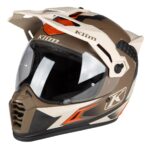
4. Bell MX-9 Adventure MIPS
The Bell MX-9 Adventure MIPS is perfect for riders on a budget who do not want to compromise on safety. It features MIPS (Multi-directional Impact Protection System) for enhanced impact protection. The MX-9 also includes a lightweight polycarbonate shell that meets DOT and ECE standards.
– Key Features: MIPS technology, adjustable visor, integrated ventilation
– Pros: Affordable, enhanced safety, good ventilation
– Cons: Basic noise reduction
– Best For: Budget-conscious riders seeking dependable safety features.
Bell’s website for additional information on this MX-9 dual-sport adventure motorcycle cool helmet
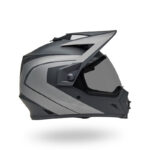
5. AGV AX9
AGV’s AX9 offers versatility and style, with a removable peak and integrated visor that make it suitable for both on-road and off-road use. Its lightweight composite shell is constructed with carbon, aramid, and fiberglass for optimum durability and comfort.
– Key Features: Modular peak, multi-material shell, integrated sun visor
– Pros: Versatile, lightweight, excellent ventilation
– Cons: Slightly limited noise reduction
– Best For: Riders looking for a flexible, stylish, and safe helmet.
6. Scorpion EXO-AT950
The Scorpion EXO-AT950 stands out as a modular helmet with off-road capabilities. This dual-sport helmet features an integrated drop-down sun visor and a removable peak. It’s ideal for riders who appreciate the convenience of modular designs without sacrificing adventure features.
– Key Features: Modular chin bar, built-in sun visor, KwikWick® liner
– Pros: Versatile modular design, comfortable, value for money
– Cons: Heavier than non-modular helmets
– Best For: Adventure riders who enjoy the flexibility of a modular helmet.
7. Nexx X.WED 2
The Nexx X.WED 2 is designed with versatility in mind, featuring multiple shell sizes and an advanced ventilation system with a range of customizable air intakes. The removable peak and action camera mount make it a popular choice for riders who document their journeys.
– Key Features: Dual EPS liner, action camera support, multiple ventilation options
– Pros: High adjustability, camera mount feature, good visibility
– Cons: Slightly noisier than premium helmets
– Best For: Riders who value customization and documentation options.
8. HJC DS-X1
For riders who want reliable safety without breaking the bank, the HJC DS-X1 offers excellent value. Its polycarbonate shell ensures a lightweight and comfortable fit. While it may not have all the premium features, it boasts good ventilation and a durable design.
– Key Features: Lightweight shell, adjustable visor, ACS ventilation system
– Pros: Affordable, decent airflow, solid safety ratings
– Cons: Basic padding, less noise isolation
– Best For: Newcomers or casual riders prioritizing affordability and functionality.
9. Icon Variant Pro
The Icon Variant Pro blends aggressive styling with solid safety features. It comes with a fiberglass composite shell that is both lightweight and strong. The Variant Pro is particularly well-suited for riders who prefer a more aggressive look with all the essential safety features.
– Key Features: Fiberglass shell, sculpted peak, Hydradry™ interior
– Pros: Stylish design, well-ventilated, comfortable
– Cons: Less modular, not the quietest option
– Best For: Style-conscious riders looking for safety and comfort.
10. LS2 Explorer
The LS2 Explorer is a competitive option that provides comfort, durability, and a variety of features at a reasonable price. Its carbon fiber shell ensures a lightweight profile without compromising safety. The helmet also offers a built-in drop-down sun visor and good airflow.
– Key Features: Carbon fiber shell, integrated sun visor, efficient ventilation system
– Pros: Lightweight, budget-friendly for its class, well-ventilated
– Cons: Padding could be improved for long rides
– Best For: Riders seeking a mid-range helmet with high-end safety features.
Buyer’s Guide: What to Look for in an Adventure Motorcycle Helmet
When selecting an adventure motorcycle helmet, consider the following:
– Safety Standards: Ensure the helmet meets DOT, ECE, or Snell certifications.
– Comfort: Look for well-padded interiors and adjustable fit systems.
– Ventilation: Essential for long-distance travel in varying weather conditions.
– Weight: Lighter helmets reduce fatigue during extended rides.
– Noise Reduction: Important for maintaining focus on the road.
– Modular Features: Great for flexibility and convenience.
Conclusion
The right adventure motorcycle helmet balances safety, comfort, and versatility. Whether you’re an experienced long-distance rider or a newcomer venturing into adventure motorcycling, choosing a helmet from this list will ensure you’re equipped with reliable protection and comfort for your journey. Prioritize your needs, budget, and riding style to find the perfect fit.

